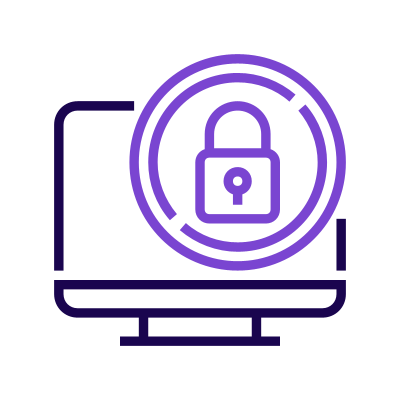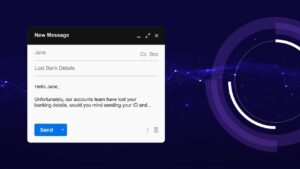It’s widely understood that cyber threats and risks are pervasive, which is why more businesses have CISOs and dedicated teams today.
However, remaining proactive in threat detection is becoming increasingly complex for these departments. It’s now a case of hunting for threats and seeking them out instead of just identifying them only when they’re at the gates or, worse, inside.
Despite the defenses put in place, malicious and suspicious behavior is still too easily penetrating IT infrastructure. That’s why threat hunting is a vital component of cyber security efforts and success.

Threat actor behaviors
Let’s first look at the behaviors and techniques used by attackers.
- Initial access: as described on the box, this is the first step made into the target’s environment.
- Execution: once inside, run malicious code with the aim to do more.
- Persistence: one of an attacker’s main goals is to remain within the environment – even when it’s been shut down.
- Privilege escalation: often, an attacker needs to elevate their level of access once within the system in order to continue any further action.
- Defense evasion: again, as expected, this is as described on the box. This behavior encompasses a wide range of techniques to avoid being detected, including installing and then uninstalling software or even removing any traces as they make their way through the system.
- Credential access: attackers or threat actors will steal and use legitimate user credentials to gain access and create more accounts so that their activity isn’t picked up as suspicious.
- Lateral movement: to move laterally within a network, the threat actor needs first to discover how it’s all configured. From here, they can then pivot from one system to another to reach their target and meet their goal.
- Command and control: taking over and controlling the system.
- Exfiltration: the act of stealing information while remaining undetected.
- Impact: this encompasses all attempts to prevent the victim from accessing the system, even destroying it.
Threat hunting misconceptions
There are many misconceptions about what constitutes threat hunting because of tools and techniques continually reintroduced in new ways but without new approaches.
For example, while cyber threat intelligence (CTI) is a good starting point for threat hunting, it’s not the same as threat hunting itself. Intelligence can help to understand weaknesses and vulnerability trends, but more is needed proactively.
Likewise, installing detection tools and running queries randomly on monitoring tools are useful at finding anomalies, but once again, having such tools in place is only part of the exploration.
Threat hunting uses complex techniques and methods to prevent threat behavior from evading any of the above. For valid threat hunting, threat hunting experts and analysts are needed to bolster a basic threat hunting program using existing security methods, teams, and tools.
So, what is true threat hunting?
As cyber threats facing organizations are becoming more complex and inconspicuous, CISOs and their teams can no longer rely on waiting for alerts to come through to action investigation and remediation. More sophistication in detection and isolation, even in proactive efforts, need to match the high level of threats now. This is where true threat hunting comes in.
Endpoint visibility, firewalls, and intrusion detection systems are key components that make a successful cybersecurity system; however, these depend on alerts. Alerts need to be set and prioritized and often give little in the way of what is actually happening. The collection of alerts presented to a security operation center (SOC) can be much like a game of detective work, piecing together clues for the culprit to be made clear.
On the other hand, threat hunting is designed to uncover hidden threats within a network or system that have managed to bypass traditional security tools and measures. Its proactive approach means that an assumption is made that a breach has already occurred. Therefore the “hunt” looks for existing signs of intrusion that have evaded detection as opposed to the possibility of what could happen.
The goal of threat hunting is to reduce what is known as dwell time by proactively sifting through the organization’s environment for signs of compromise and minimizing any impact.
Cyber threat hunting service
An authentic threat hunting service involves meticulous and methodical preparation to remove adversaries from the network before harm and impact have taken place.
It will reduce breaches and breach attempts by reducing the attack surface with fewer attack vectors. It will also increase the speed and accuracy of responses, and crucially, it will provide measurable improvements in the organization’s security.
ENHALO’s service proactively prevents threats from entering and causing damage by searching for indicators of compromises and neutralizing them while identifying areas of weakness and misconfigured sites that could result in future attacks.
It also goes beyond the immediate infrastructure to prevent attacks. It looks for compromised credentials available on the dark web, vulnerable files that have been innocently uploaded to online tools, and it works with various third-party applications used in your organization for a holistic service.
Critical to note is that one cannot automate threat hunting because it requires being proactive and planning ahead, using tools that only humans with their expertise can provide. The human touch and people-driven processes are needed to really make it work.
With so many IT and security teams already being stretched, it can be challenging to be truly proactive. Threat hunting services bring into place the unique combination of tools and expertise to proactively discover threats and malicious activity that bypasses existing security tools and defenses – arguably one of the most effective methods in cybersecurity.







